第75章 IV(8)
As we have seen Nature anticipating the plasterer in fibro-cartilage, so we see her beforehand with the glassblower in her dealings with the cell. The artisan blows his vitreous bubbles, large or small, to be used afterwards as may be wanted. So Nature shapes her hyaline vesicles and modifies them to serve the needs of the part where they are found. The artisan whirls his rod, and his glass bubble becomes a flattened disk, with its bull's-eye for a nucleus. These lips of ours are all glazed with microscopic tiles formed of flattened cells, each one of them with its nucleus still as plain and relatively as prominent, to the eye of the microscopist, as the bull's-eye in the old-fashioned windowpane. Everywhere we find cells, modified or unchanged. They roll in inconceivable multitudes (five millions and more to the cubic millimetre, according to Vierordt) as blood-disks through our vessels. A close-fitting mail of flattened cells coats our surface with a panoply of imbricated scales (more than twelve thousand millions, as Harting has computed, as true a defence against our enemies as the buckler of the armadillo or the carapace of the tortoise against theirs. The same little protecting organs pave all the great highways of the interior system. Cells, again, preside over the chemical processes which elaborate the living fluids; they change their form to become the agents of voluntary and involuntary motion; the soul itself sits on a throne of nucleated cells, and flashes its mandates through skeins of glassy filaments which once were simple chains of vesicles. And, as if to reduce the problem of living force to its simplest expression, we see the yolk of a transparent egg dividing itself in whole or in part, and again dividing and subdividing, until it becomes a mass of cells, out of which the harmonious diversity of the organs arranges itself, worm or man, as God has willed from the beginning.
This differentiation having been effected, each several part assumes its special office, having a life of its own adjusted to that of other parts and the whole. "Just as a tree constitutes a mass arranged in a definite manner, in which, in every single part, in the leaves as in the root, in the trunk as in the blossom, cells are discovered to be the ultimate elements, so is it also with the forms of animal life. Every animal presents itself as a sum of vital unities, every one of which manifests all the characteristics of life."
The mechanism is as clear, as unquestionable, as absolutely settled and universally accepted, as the order of movement of the heavenly bodies, which we compute backward to the days of the observatories on the plains of Shinar, and on the faith of which we regulate the movements of war and trade by the predictions of our ephemeris.
The mechanism, and that is all. We see the workman and the tools, but the skill that guides the work and the power that performs it are as invisible as ever. I fear that not every listener took the significance of those pregnant words in the passage I quoted from John Bell,--"thinking to discover its properties in its form." We have discovered the working bee in this great hive of organization.
We have detected the cell in the very act of forming itself from a nucleus, of transforming itself into various tissues, of selecting the elements of various secretions. But why one cell becomes nerve and another muscle, why one selects bile and another fat, we can no more pretend to tell, than why one grape sucks out of the soil the generous juice which princes hoard in their cellars, and another the wine which it takes three men to drink,--one to pour it down, another to swallow it, and a third to hold him while it is going down.
Certain analogies between this selecting power and the phenomena of endosmosis in the elective affinities of chemistry we can find, but the problem of force remains here, as everywhere, unsolved and insolvable.
Do we gain anything by attempting to get rid of the idea of a special vital force because we find certain mutually convertible relations between forces in the body and out of it? I think not, any more than we should gain by getting rid of the idea and expression Magnetism because of its correlation with electricity. We may concede the unity of all forms of force, but we cannot overlook the fixed differences of its manifestations according to the conditions under which it acts. It is a mistake, however, to think the mystery is greater in an organized body than in any other. We see a stone fall or a crystal form, and there is nothing stranger left to wonder at, for we have seen the Infinite in action.
Just so far as we can recognize the ordinary modes of operation of the common forces of nature,--gravity, cohesion, elasticity, transudation, chemical action, and the rest,--we see the so-called vital acts in the light of a larger range of known facts and familiar analogies. Matteuecci's well-remembered lectures contain many and striking examples of the working of physical forces in physiological processes. Wherever rigid experiment carries us, we are safe in following this lead; but the moment we begin to theorize beyond our strict observation, we are in danger of falling into those mechanical follies which true science has long outgrown.
Recognizing the fact, then, that we have learned nothing but the machinery of life, and are no nearer to its essence, what is it that we have gained by this great discovery of the cell formation and function?